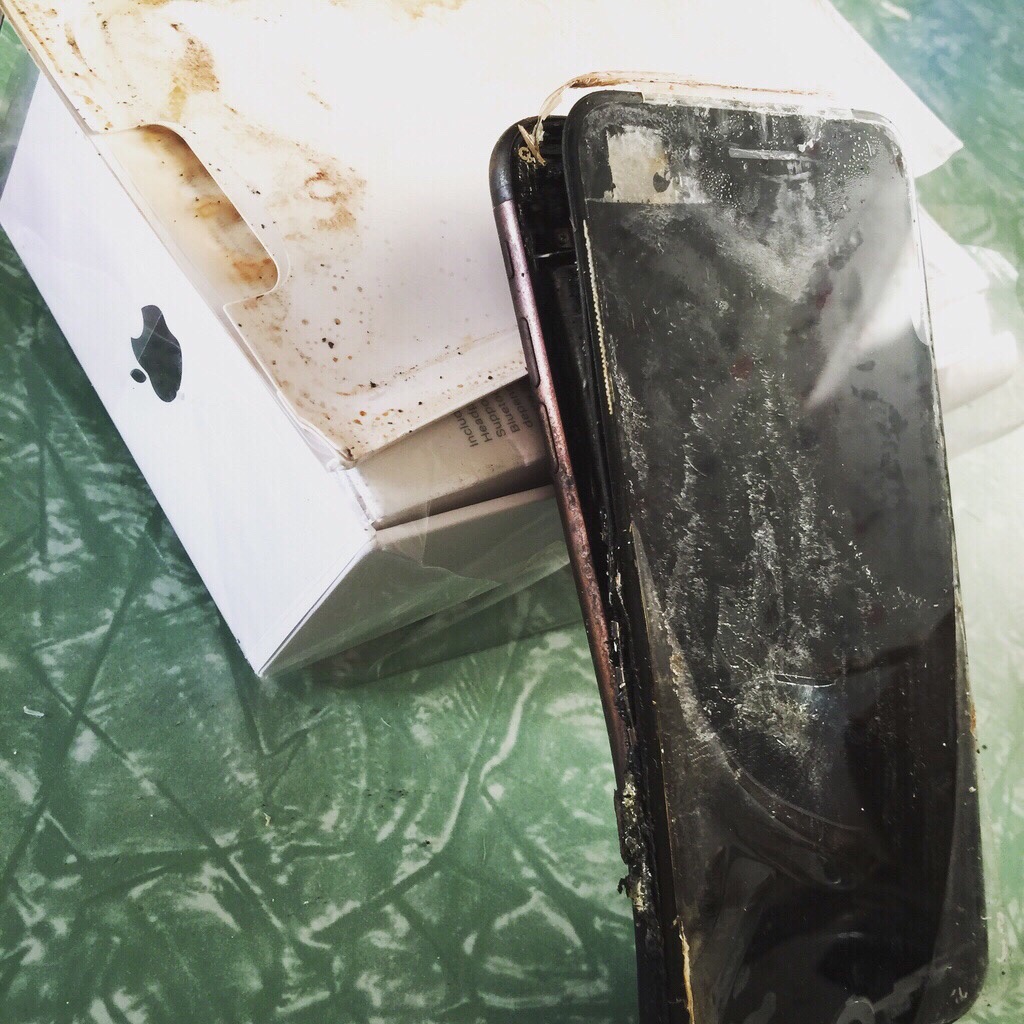How to stop your smartphone battery from exploding
2016 may be remembered as the year self-driving cars started to become a thing, or as a low point for American democracy. But it will also be remembered as the time that expensive electronics started doubling as handwarmers.
Apple and Samsung devices (and washing machines!) have started going boom with slightly worrying regularity, all because of the sometimes-unstable power source lingering inside. Here’s how to keep your lithium-ion-using device at a safe and non-explosive temperature.
DON’T MISS: Yup, now the iPhone 7 is exploding
From a scientific point of view, the fact that lithium-ion batteries can explode really isn’t a surprise. Cellphone and laptop batteries have been intermittently catching fire, swelling up or exploding for decades.
The reason is simple: batteries store energy, and while most of the time, that energy is turned into dank memes or FaceTime calls, when things go wrong, it can turn into flames. It’s the same thing as a car’s tank of gas: when everything goes properly, the energy is released gradually and safely by the engine, which makes the wheels go round and round. But when there’s a leak or a fire or a crash, the entire tank of gas can go up at once.

Pictured: a car fire caused by a charging Note 7 in Florida
Of course, regulators and companies have known about the dangers of lithium batteries ever since they were first introduced, and in theory, every battery sold today should not fail under ideal circumstances. But accidents happen, so let’s take a look at how and why lithium-ion batteries can go boom.
Assuming a battery is properly and safely manufactured, the most common cause of a fire or explosion is physical damage. If a battery is badly dropped — or worse, penetrated with a sharp object — it can cause a short circuit inside one cell. That will lead to energy flow between the positive and negative elements of the cell, causing “thermal runaway,” and quite possibly a fire.
One cell heating up dramatically can also cause a chain reaction inside the entire battery, leading each cell in turn to heat up and vent. In practice, this looks less like an explosion and more like a quick and violent fire.
So, simple solution: don’t stick nails into your phone! Less obviously, you should be cautious with a device after it’s suffered any kind of physical damage. If your phone or tablet takes a big tumble, monitor it for signs of damage like the battery not holding charge, the device getting unusually hot, or the batteries swelling in any way.
That covers physical damage. But what about the dozens of Samsung devices that have recently been exploding with no damage?
From the information Samsung has released, it’s a similar kind of fault as physical damage, but due to a flaw in the manufacturing process. For some reason, cells were manufacturered with the positive and negative terminals too close to one another. That causes excessive heat within the battery, especially during charging or use in a particularly hot place. Combine those factors, and you have a perfect recipe for thermal runaway.
But why did Samsung screw up so badly? The big-picture reason is really to do with lithium-ion battery technology, and consumers’ demand for better battery life. The battery chemistry of lithium-ion cells hasn’t changed that much over the last decade, but consumers have been clamouring for better battery life. So, in an effort to cram more energy into the same-sized battery, manufacturers have been pushing tolerances more and more, meaning that one tiny error in the manufacturing process can have huge effects.
If you have an affected Samsung Galaxy Note 7, the easiest way to prevent it from exploding is to go trade it in for a new, non-explosive device. In the interim, you should avoid charging your phone all the way (Samsung has even released a software patch that will do just that), and avoid charging or using it in warm places (sorry, Florida).

iPhone 7 that apparently came out of the box pre-exploded
But it’s not just Samsung devices that have been exploding. A story is going around today about an iPhone 7 that appeared to explode. According to the user, he opened the box of a brand-new iPhone, and it looked like this. We don’t know precisely what happened yet, but a decent guess would be the box was left somewhere too hot, which could cause the battery to overheat and go boom.
Although batteries are safe in general (far safer than driving in a car, for example!), there’s still a few precautions you can take to avoid spontaneous combustion:
Don’t buy off-brand batteries to put in your devices. Even if they use the same battery cells, brand-name batteries have circuitry that’s designed to keep the battery safe, protect it from bad chargers, and vent the battery if the pressure in the cells becomes too high. With cheap replacement cells, you have no guarantee that they’ve taken the same precautions.
Avoid using bad chargers with unknown power supplies. Cheap chargers from gas stations (or even Amazon) don’t always follow the USB protocols, and can accidentally send completely the wrong amount of power. Using a charger that’s underpowered will hurt your battery long-term; using a bad charger (or even cable!) that sends too much power can fry your devices.
Don’t charge in extreme temperatures. Your smartphone manual will have temperature limits written on it, normally 0-45 degrees Centigrade. Charging your device outside of those temperatures can cause long-term damage, and even fires in the worst case scenario.
Don’t hit your batteries with a nail, hammer, sledgehammer, jackhammer, bowling ball, or really any pointy or heavy object. Just avoid hitting batteries in general.
-
Henrik Fisker is using a revolutionary new battery to power his Tesla killer[2016/10/17]
-
How Fossil Fuels Helped A Chemist Launch The Plastic Industry[2016/10/24]
-
Apparently Seabirds Dine on Plastic Because They Think It Tastes Good[2016/11/11]
-
Lyon Solar, Mitsubishi in 1000MW solar battery plunge[2016/09/30]
-
Apple is working on iPhone batteries that last longer and don’t explode[2016/10/08]
-
Bendable Battery May Power Future Wearable Devices, Smartphones[2016/10/19]
-
iPhone 7 battery charging is so much slower than rivals (but at least it won’t explode)[2016/10/13]
-
Should you fear your phone battery?[2016/10/13]
-
Multiple lane closures on Downtown Connector this weekend[2016/09/24]
-
Wireless Charging: Coming Soon to an Electric Vehicle Near You[2016/10/28]
-
On the sleepy Hawaiian island of Kauai sits a first of its kind solar and battery project.[2016/11/18]





